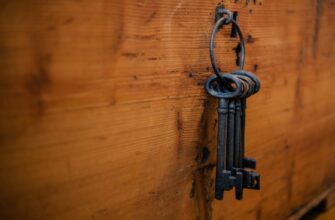- Introduction: Why Bitcoin Safety Matters
- Step 1: Choose a Reputable Exchange Platform
- Step 2: Fortify Your Account Security
- Step 3: Complete Identity Verification Securely (KYC)
- Step 4: Fund Your Account Using Safe Payment Methods
- Step 5: Execute Your Bitcoin Purchase Correctly
- Step 6: Transfer to a Secure Wallet Immediately
- Ongoing Security Best Practices
- Frequently Asked Questions
- Is buying Bitcoin through PayPal safe?
- What’s the minimum safe Bitcoin purchase?
- Can I buy Bitcoin completely anonymously?
- How do I spot Bitcoin scams?
- What if an exchange gets hacked?
Introduction: Why Bitcoin Safety Matters
With Bitcoin’s growing mainstream adoption, learning how to buy cryptocurrency securely is essential. Over $1 billion in crypto was stolen through scams in 2023 alone. This guide breaks down the safest methods to purchase Bitcoin while protecting your investment from hackers, fraud, and common pitfalls. Follow these steps to enter the crypto space with confidence.
Step 1: Choose a Reputable Exchange Platform
Your first line of defense is selecting a trustworthy platform. Prioritize exchanges with:
- Regulatory compliance (look for licenses in your jurisdiction)
- Cold storage for customer funds (95%+ offline)
- Two-factor authentication (2FA) enforcement
- Insurance coverage against breaches
- Transparent fee structures with no hidden costs
Top-rated options include Coinbase, Kraken, and Gemini – all offering FDIC insurance on USD balances and SOC 2 security certifications.
Step 2: Fortify Your Account Security
Before purchasing Bitcoin, bulletproof your exchange account:
- Enable Google Authenticator 2FA (avoid SMS authentication)
- Create a 12+ character password with symbols, numbers, and mixed case
- Use a dedicated email with separate password for crypto activities
- Whitelist withdrawal addresses to prevent unauthorized transfers
- Verify all login notifications immediately
Step 3: Complete Identity Verification Securely (KYC)
Exchanges require Know Your Customer checks. Protect your data during verification:
- Upload documents through the official app/website only
- Never email sensitive documents
- Use encrypted internet connections (look for HTTPS://)
- Blur non-essential information in documents when permitted
- Monitor credit reports afterward for suspicious activity
Step 4: Fund Your Account Using Safe Payment Methods
Deposit fiat currency wisely:
- Bank transfers (ACH): Lowest risk with reversible options
- Debit cards: Faster but higher fees (3-5%)
- Avoid credit cards: High fees + cash advance interest
- Never use peer-to-peer methods for initial purchases
Always initiate transfers from your bank’s official portal, not through exchange links.
Step 5: Execute Your Bitcoin Purchase Correctly
When buying Bitcoin:
- Start with small test purchases under $100
- Use limit orders to control price execution
- Double-check Bitcoin wallet addresses before confirming
- Review all transaction details including network fees
- Save transaction IDs for records
Step 6: Transfer to a Secure Wallet Immediately
Never store large amounts on exchanges. Withdraw to:
- Hardware wallets (Ledger, Trezor) – Most secure for long-term storage
- Mobile wallets (Blockstream Green) – For smaller balances
- Paper wallets – Advanced cold storage option
Always send a test transaction first, then transfer the full balance after confirmation.
Ongoing Security Best Practices
Maintain safety after purchase:
- Update wallet software monthly
- Never share seed phrases or private keys
- Use VPNs on public Wi-Fi
- Bookmark exchange URLs to avoid phishing sites
- Diversify storage across multiple wallets
Frequently Asked Questions
Is buying Bitcoin through PayPal safe?
While convenient, PayPal doesn’t allow Bitcoin transfers to external wallets. Your coins remain vulnerable to account breaches. Use only for small, temporary holdings.
What’s the minimum safe Bitcoin purchase?
Start with $20-$50 test transactions to verify all security steps before larger investments. This minimizes risk while learning the process.
Can I buy Bitcoin completely anonymously?
Most regulated exchanges require ID verification. For true anonymity, consider decentralized exchanges (DEXs) with non-custodial wallets, but these carry higher technical risks.
How do I spot Bitcoin scams?
Red flags include unsolicited offers, guaranteed returns, pressure to act immediately, and requests for seed phrases. Legitimate companies never ask for private keys.
What if an exchange gets hacked?
Funds in regulated exchanges with proper insurance (like Coinbase) may be recoverable. This is why immediate transfer to private wallets is critical – exchanges remain prime hacker targets.
By following these security-focused steps, you’ll significantly reduce risks when entering the Bitcoin ecosystem. Always prioritize safety over convenience, and never invest more than you can afford to lose.








